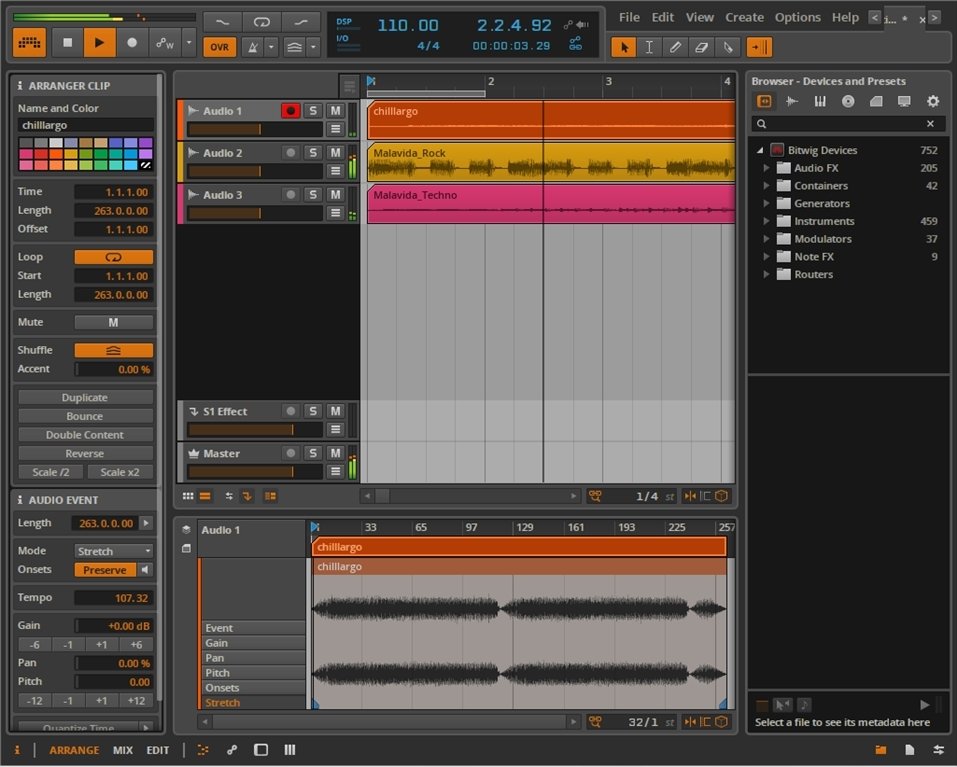

Software systems such as Reaktor Blocks (opens in new tab), Bitwig’s The Grid and Ableton’s CV Tools (opens in new tab) allow for seamless connectivity between virtual and real world gear, while devices like Arturia’s (opens in new tab) Beatstep Pro make it easier than ever to sync between USB and CV. What’s new, however, is the ability to merge the worlds of digital connectivity and analogue patching. The appeal is down to the inherent patchability of analogue connection too though sure, MIDI can send multiple types of control messages via a single cable, but it lacks the creative satisfaction of individually patching modulators, clocks sources and triggers using an analogue patchbay or modular rig.

This can be tied to the boom in both Eurorack modular and affordable analogue synths.

Right now MPE is only supported by certain plugins, such as FXpansion’s (opens in new tab) Strobe 2 and Cypher 2, and DAWs, including Bitwig Studio (opens in new tab), Logic (opens in new tab) and GarageBand (opens in new tab), but the list is growing.Īnother interesting development has been the resurgence of CV and analogue sync connections. Whereas, for example, a traditional MIDI instrument will adjust pitchbend for every note in a chord simultaneously, MPE devices can adjust pitch modulation for each individual note. Spearheaded by Roli (opens in new tab), as well as Haken Audio (opens in new tab), Roger Linn (opens in new tab) and Keith McMillen (opens in new tab), this is a form of MIDI protocol that uses individual channels for each note played, allowing for expanded expression on a per-note basis. One significant development that’s emerged in the meantime has been the rise of MPE – originally short for Multidimensional Polyphonic Expression, but now officially rebranded MIDI Polyphonic Expression.

This forthcoming new generation protocol promises to increase the capabilities of MIDI devices, with tighter integration for DAWs and browsers, more expression and tighter timing.
BITWIG STUDIO LOGIC CONTROL UPDATE
While MIDI has evolved and been expanded during the course of its lifetime, the core framework has remained pretty much the same – in fact, it’s only this year, after over 35 years, that an official MIDI 2.0 update has been announced. MIDI had advantages over classic control voltage it was an agreed standard that could be used by all manufacturers, but it was also capable of sending a more complex array of messages through a single cable, including note on, pitch, velocity, clock rate and position and program change messages. In the early ’80s, MIDI (musical instrument digital interface) was developed by several major synth designers including Dave Smith, Bob Moog and Roland’s Ikutaro Kakehashi. There was a lack of consistency across different brands’ instruments too – Moog and others used a system of one volt per octave to control pitch, whilst Korg and Yamaha gear used a ‘Hertz per Volt’ system. For one thing, there’s an inherent slight unpredictability to control voltages, which meant timings and note pitches could go slightly astray at times. Indicate controlled device parameters via coloured dots.While it was possible to do a surprising amount with these simple control signals, the system had its limitations. GoTo (Previous : Next) device, GoTo (Previous : Next) ParameterPage, Load (Previous : Next) presetĨ device controls via Maschine’s knobs …. Switch Launcher/Arranger, ToggleBrowser, ToggleMixerView, ToggleDeviceView, ToggleNoteEditorView, ToggleAutomationViewįor the selected track: GoTo (Previous : Next) track, TrackVolume, TrackPan, TrackMute, TrackSolo, TrackArm Play, Stop/Return to start, Record, LoopPlayback, PunchIn, PunchOut, Click volume and pan control will pickup from the current value. now buttons on Maschine will light up to indicate controls state. – added bi-directional communication via observers for buttons, volume and pan controls. – added Macro Controls for the selected device and colour indicators. – added NoteInput: you can now play instruments via Maschine’s pads. – Go to BWS’s preferences/Controllers page and press “Detect available controllers” – Load the Maschine’s Template via “ControllerEditor – place the “NativeInstruments” folder in “/Users/MaXchine/Documents/Bitwig Studio/Controller Scripts” Ni Maschine ( MK2 ) Controller Script for Bitwig Studio:


 0 kommentar(er)
0 kommentar(er)
